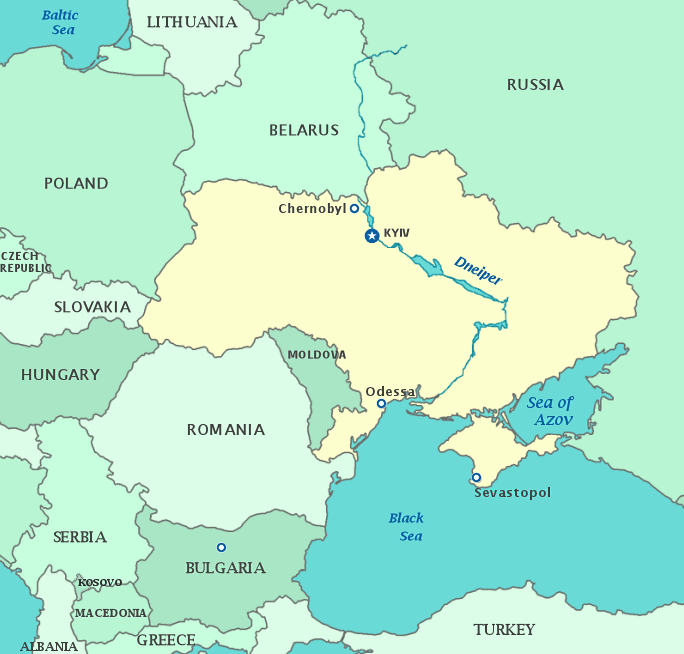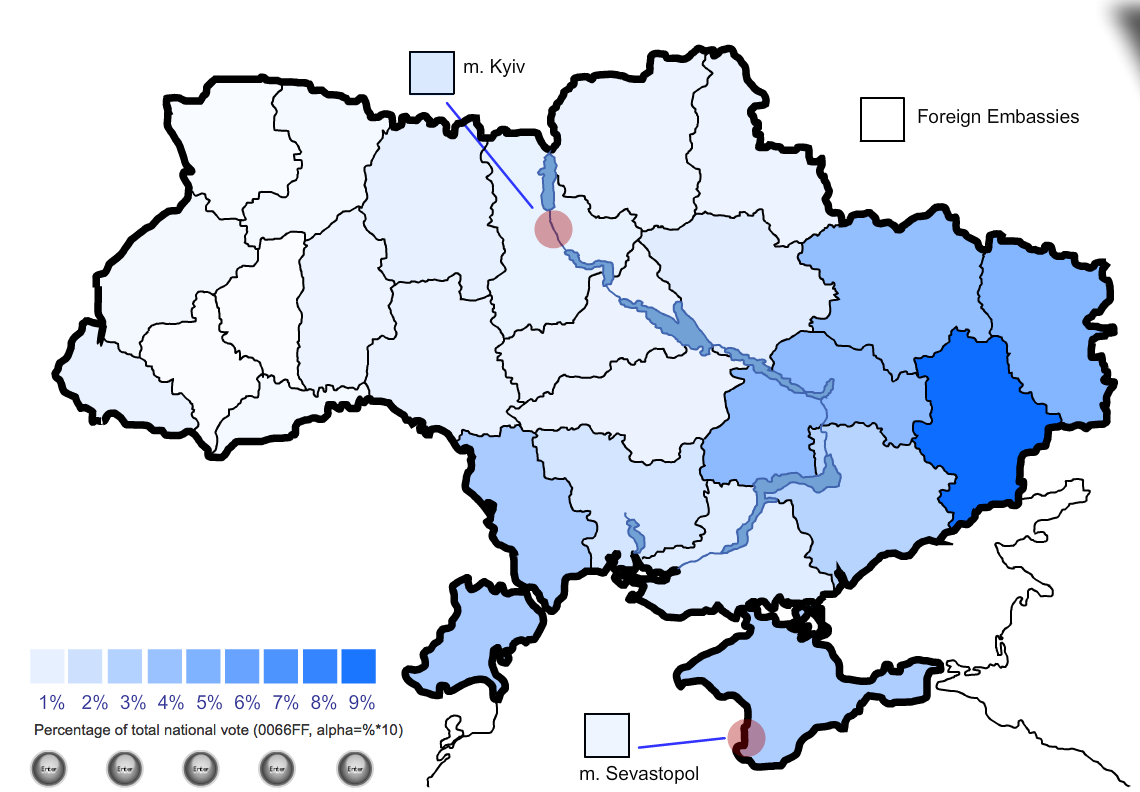With Ukraine in the news on a daily basis, I thought that a bit of background about the nation may help us put things into perspective and better understand the root causes of the current unrest.
Let's open with a map showing the geographic location of Ukraine:
The political movement against the current President Viktor Yanukovych began in November 2013 when he decided to sign a trade deal with Russia rather than with the EU. This resurrected old divisions in the nation that are related to the country's demographics as shown on this map:
Ukraine's political theatre has long been divided between those who speak Ukrainian and live in the west part of the country (the areas in red and pink) and those who speak Russian and live in the east part of the country (in shades of yellow). About two-thirds of people who live in Ukraine are ethnic Ukrainians, 16 percent are ethnic Russians and 16 percent are ethnic Ukrainians who speak Russian.
This division has had a significant impact on Russian politics. The President of Ukraine is elected for a five year term. When no candidate wins more than 50 percent of the vote, in the first round, a second round takes place three weeks after the election day between the two candidates who won the most votes in the first round. In the 2010 election, the two candidates who received the most votes in the first two rounds were Viktor Yanukovych and Yulia Tymoshenko.
Here is a map showing the results for the February 7th, 2010 runoff Presidential election by candidate, starting with the current President, Viktor Yanukovych:
The areas in darker blue are the regions where Mr. Yanukovych took a larger share of the vote. You will notice that Mr. Yanukovych was most popular in the east part (Russian sector) of the country where he garnered up to 9.55 percent of the total national vote and that he was least popular in the western part of the country where he received less than 1 percent of the national vote. Overall, Mr. Yanukovych received 12481266 votes or 48.96 percent of the total.
Here is a map showing the results for Mr. Yanukovych's competitor, Yulia Tymoshenko:
The areas in darker yellow are the regions where Ms. Tymoshenko, Ukraine's former Prime Minister, took a larger share of the vote. You'll notice that Ms. Tymoshenko was most popular in the west part (Ukrainian sector) of the country where she garnered up to 5.15 percent of the national vote and that she was least popular in the western part of the country where she received less than 1 percent of the national vote. Overall, Ms. Tymoshenko received 11593357 votes or 45.48 percent of the total. An additional 4.36 percent of voters cast their ballots "against all candidates".
This election was the fifth held since Ukraine gained its independence from Russia. After the election results were in, Ms. Tymoshekno challenged the final election results in the High Administrative Court, alleging that the February 7th runoff vote was marred by numerous violations, calling for a third round of elections. The court denied her motion to call members of the District Elections Commissions and Precinct Elections Commissions as witnesses so she withdrew her complaint.
From this posting, you can quite readily see why there is such unrest in Ukraine. With the nation divided in two along ethnic lines and historic rivalries, the situation will be very difficult to solve.
Click HERE to read more of Glen Asher's columns
You can publish this article on your website as long as you provide a link back to this page.





Be the first to comment